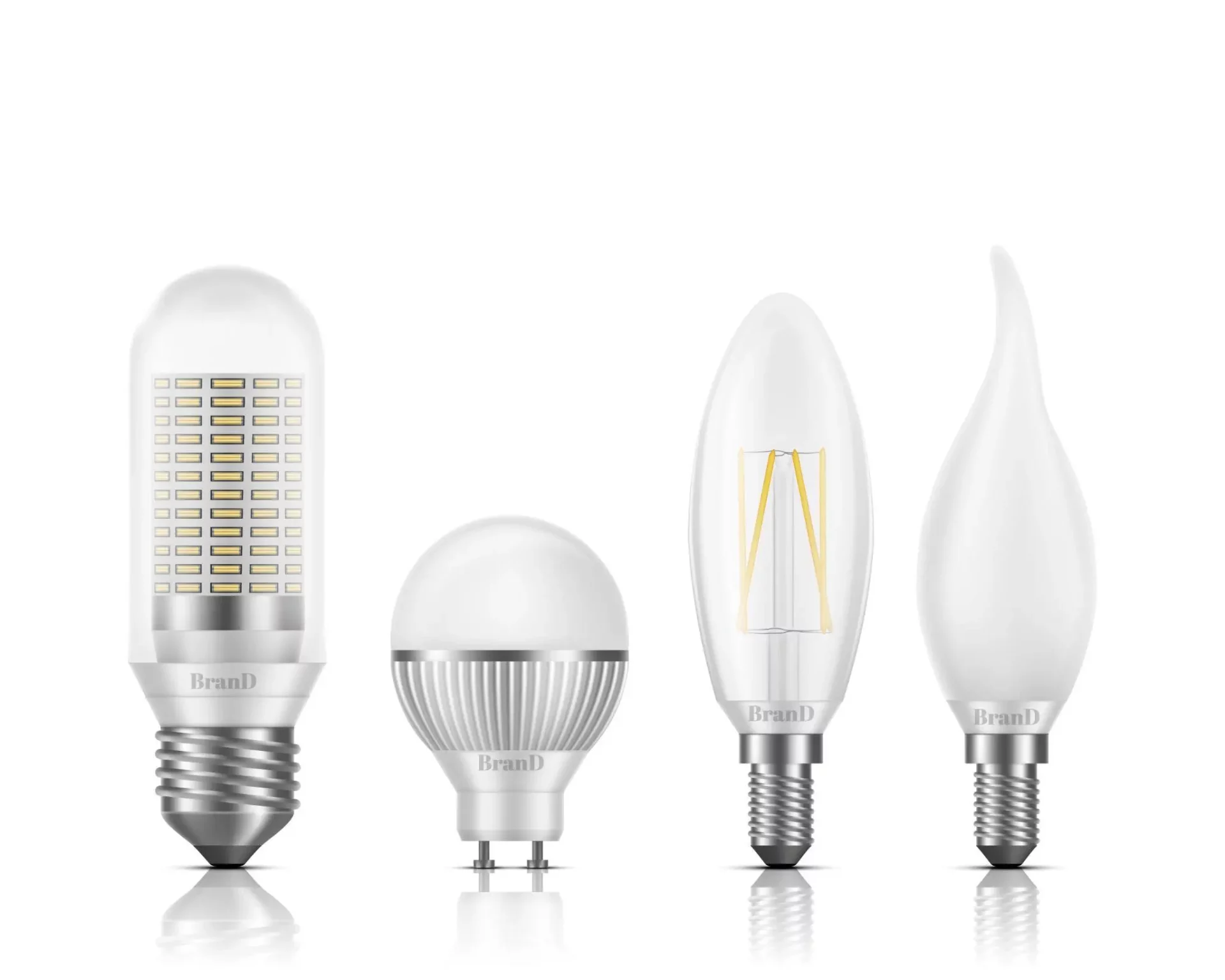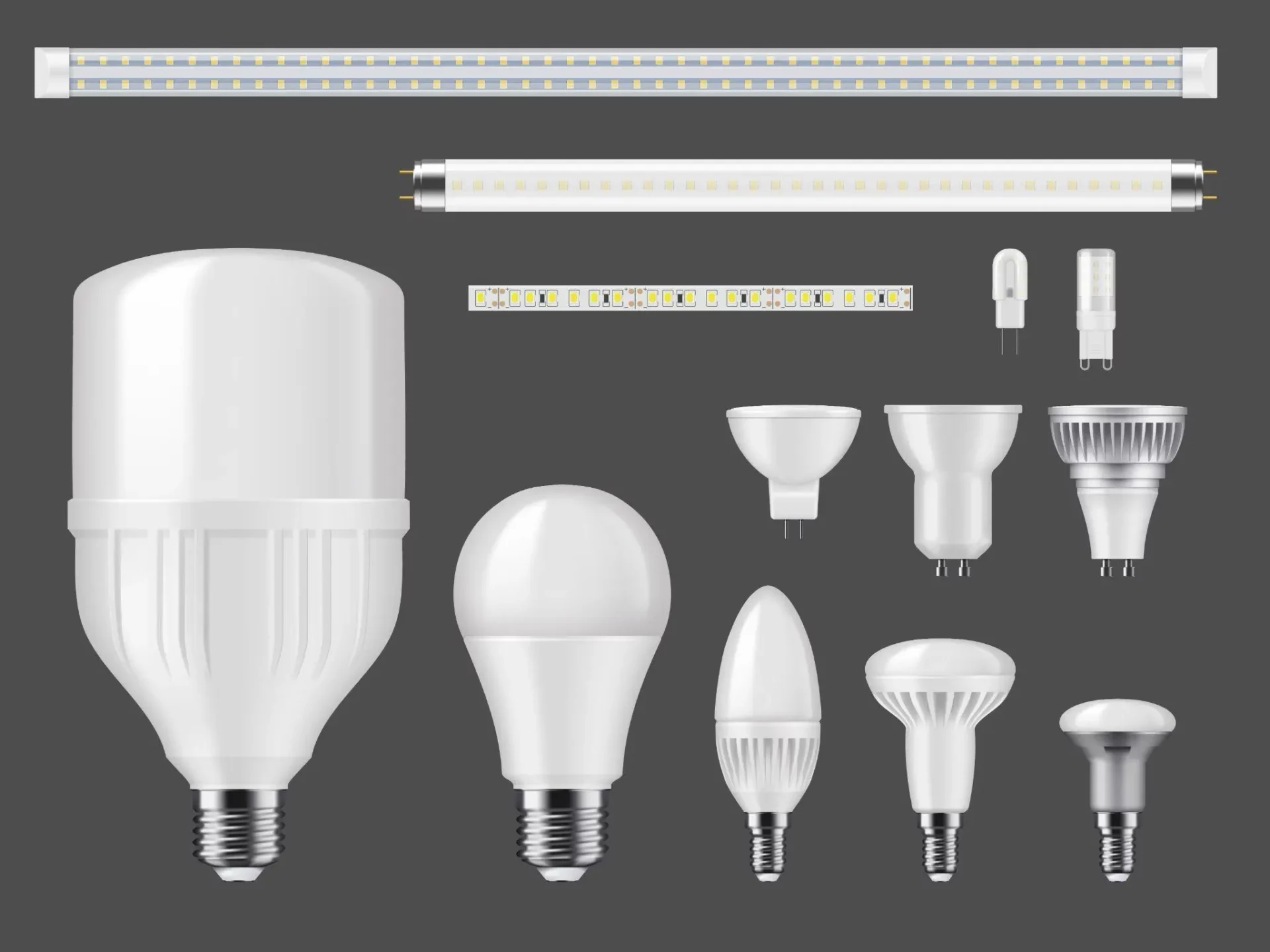Light bulb bases are the part of the bulb that connects to the power source and are integral in ensuring compatibility with lighting fixtures.
There are various light bulb base types used across different regions and for different applications. Each base type has its own unique set of characteristics, sizes, and connecting methods, ranging from screw-in bases to pin bases.

Understanding light bulb bases is crucial for anyone looking to replace or install lighting fixtures. It ensures the bulb will fit securely in the socket and function properly.
Among the most common base types are the Edison screw bases, represented by codes such as E26 and E27, which indicate the size and thread type of the base. Bayonet bases are another typical variety, prevalent in certain geographical locations, and include types like B22. There are also pin bases, which are often seen in halogen or fluorescent light fixtures and vary in size and pin configuration.
For household and commercial environments, selecting the appropriate base type is as essential as choosing the bulb’s shape or brightness.
Knowing the difference between base types is necessary not only for practical reasons but also for impacting the longevity and safety of the lighting solution. Additionally, with the evolution of smart home technology, ensuring the correct base compatibility has become more relevant than ever.
Light bulb bases are categorized by their connection type. The correct base type ensures compatibility with the light bulb socket for secure installation and reliable electrical contact.
Screw bases, also known as Edison bases, are characterized by their threaded metal sides that twist into sockets. There are several common sizes, with E26/E27 being the standard medium size for most household bulbs. E12 denotes a candelabra, which is a smaller screw-in base commonly used for decorative lighting.
Pin bases involve two metal pins protruding from the base of the bulb that plug into matching sockets. Bi-pin base sizes, like G4 or GU24, indicate the distance in millimeters between the pins. These bases are prevalent in halogen and some compact fluorescent lamps (CFLs).
Bayonet bases have pins that align with slots in the socket, requiring a push-and-twist action to lock the bulb in place. They are less common in the United States but are a standard base type in the UK. Bayonet base bulbs typically have a single contact on the bottom and are designated by a “B” in their size rating, such as B22.

When selecting a light bulb, one must consider fixture compatibility and voltage performance requirements to ensure proper fit and function.
The base of a light bulb must match the socket of a lighting fixture to ensure a secure fit. Common base types include screw bases like E26—the typical size for most household lamps—and pin bases utilized in certain track and recessed lighting. The number following ‘E’ represents the diameter in millimeters, with E26 indicating a 26-millimeter wide screw base.
Light bulb bases are designed to handle specific voltage levels and wattages.
It is imperative that one selects a bulb with a base that matches the fixture’s electrical specifications to avoid overheating and potential damage. For standard residential lighting in North America, the usual voltage is 120V, whereas commercial or industrial spaces may require bulbs that can accommodate higher voltages.
Innovative light bulb base designs have evolved to support advanced functionalities beyond simple power connectivity. These designs include features that enhance user interaction and energy efficiency.
Modern light bulb bases now often incorporate Wi-Fi or Bluetooth technology, enabling them to connect to smart home systems.
Users can control smart bulbs with their mobile devices or voice commands, allowing for remote on/off capabilities, dimming, and even color changes. For instance, bases such as the E26 with smart technology can be programmed to operate on schedules or synchronize with home automation routines.
Advances in base technology also focus on improving energy efficiency.
Many bases are designed to minimize electrical losses and are compatible with low-energy bulbs like LEDs. The GU24 base is a notable example; it features a unique 2-pin design that ensures the use of energy-efficient bulbs by physically preventing the installation of less efficient incandescent bulbs.
Energy-efficient bases contribute significantly to reducing the overall energy consumption of lighting systems in residential and commercial settings.
What is the difference between E14 and E27 light bulb bases?
E14 and E27 bases refer to two different sizes of Edison screw bases. E14, often known as the ‘Small Edison Screw’ (SES), measures 14 millimeters in diameter. It is typically used for smaller, decorative lighting fixtures.
On the other hand, E27, known as ‘Medium Edison Screw’ (MES), measures 27 millimeters and is among the most common for household light bulbs.
How does the A19 bulb differ from the E26 base?
The term A19 refers to the bulb shape and size (A-type bulb with a diameter of approximately 19 eighths of an inch), while E26 refers to the type and size of the base (26-millimeter diameter Edison screw).
An A19 bulb typically features an E26 base, so the two terms are often used together to describe a standard bulb size with a medium base.
Is A19 a type of light bulb or a base?
A19 describes the bulb’s shape and size—not the base. It is the classic shape most people think of when they imagine an incandescent bulb.
What should be considered when choosing a bulb base?
Key considerations include: